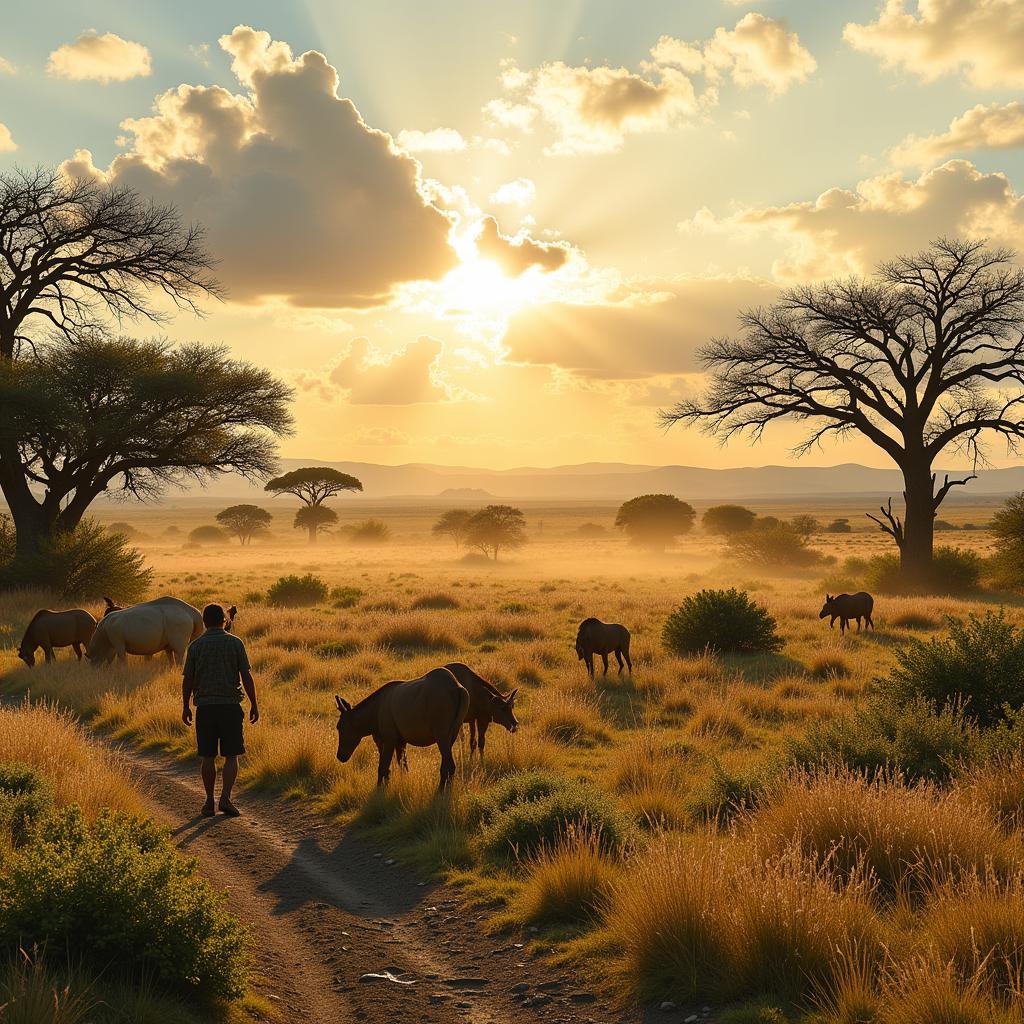Understanding the African Plate Movement
The African Plate Movement is a fascinating geological process that has shaped the continent’s landscape and continues to influence its future. This article will delve into the science behind this movement, exploring its impact on the African continent and discussing the future implications of this ongoing geological process.
What is the African Plate Movement?
The African plate is one of the Earth’s major tectonic plates. It’s a massive slab of rock that underlies not only the African continent but also significant portions of the surrounding oceans. This plate is in constant motion, albeit incredibly slow, driven by the powerful forces within the Earth’s mantle. This movement, known as the African plate movement, plays a crucial role in shaping the continent’s geology, creating its diverse landscapes and influencing its natural hazards. The African plate is actually splitting, a process that is creating the East African Rift.
One of the most visible consequences of the African plate movement is the East African Rift. This ongoing geological event is slowly tearing the African continent apart, creating a series of valleys, volcanoes, and lakes.
The African plate’s movement isn’t uniform across the entire continent. Different sections are moving at different speeds and in slightly different directions, adding to the complexity of this geological phenomenon.
The Science Behind the Movement
The driving force behind the African plate movement, like all tectonic plate movements, is the convection currents within the Earth’s mantle. These currents are created by heat rising from the Earth’s core, causing the semi-molten rock in the mantle to flow. This flow exerts pressure on the overlying tectonic plates, causing them to move.
The African plate’s interactions with surrounding plates also influence its movement. The plate boundaries, where the African plate meets other tectonic plates, are zones of significant geological activity, including earthquakes and volcanic eruptions.
Understanding the African plate movement requires considering its historical context. Over millions of years, the African plate has drifted across the Earth’s surface, colliding with other plates, separating from them, and reshaping the planet’s geography. This history is etched in the continent’s rocks and landscapes.
Future Implications of the African Plate Movement
The ongoing African plate movement has significant implications for the future of the continent. The continued rifting in East Africa could eventually lead to the formation of a new ocean basin, separating a portion of East Africa from the rest of the continent. The splitting of African continent is a slow but dramatic process.
The African plate movement also influences seismic and volcanic activity across the continent. Understanding these patterns is crucial for predicting and mitigating the risks associated with these natural hazards.
Furthermore, the movement influences the distribution of natural resources, impacting everything from mineral deposits to groundwater resources.
“The African plate movement is a dynamic process that is constantly reshaping the continent,” says Dr. Amani Jabari, a geophysicist specializing in African tectonics. “Understanding this movement is essential for managing the continent’s resources and mitigating the risks associated with natural hazards.”
Conclusion
The African plate movement is a fundamental geological process that has shaped the African continent over millions of years and continues to do so. Understanding this complex phenomenon is vital for appreciating the continent’s unique landscapes, managing its resources, and mitigating the risks associated with earthquakes, volcanic eruptions, and other geological hazards. As the African plate continues its slow but relentless journey, it will undoubtedly continue to shape the future of the African continent. Explore further the African continent physical features.
FAQ
- What causes the African plate to move?
- Convection currents in the Earth’s mantle drive the movement.
- How fast is the African plate moving?
- The African plate moves at a rate of a few centimeters per year.
- What are the major consequences of the African plate movement?
- The formation of the East African Rift Valley and associated earthquakes and volcanoes.
- Will the African continent split apart?
- While the rifting process is ongoing, it will take millions of years for a complete split to occur.
- How does the African plate movement affect natural resources?
- It influences the distribution of mineral deposits and groundwater.
- What is the East African Rift System?
- A series of valleys, volcanoes, and lakes formed by the splitting of the African plate.
- How does the African plate movement impact the surrounding oceans?
- It affects the shape and depth of the ocean floor.
We encourage you to explore other related topics on our website, such as the intriguing African American Picture Gallery.
Should you require any assistance, feel free to contact us: Phone: +255768904061, Email: kaka.mag@gmail.com, or visit us at: Mbarali DC Mawindi, Kangaga, Tanzania. Our customer service team is available 24/7.



